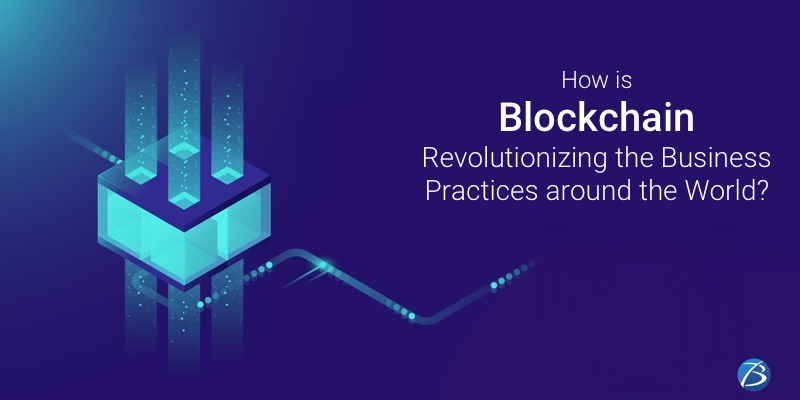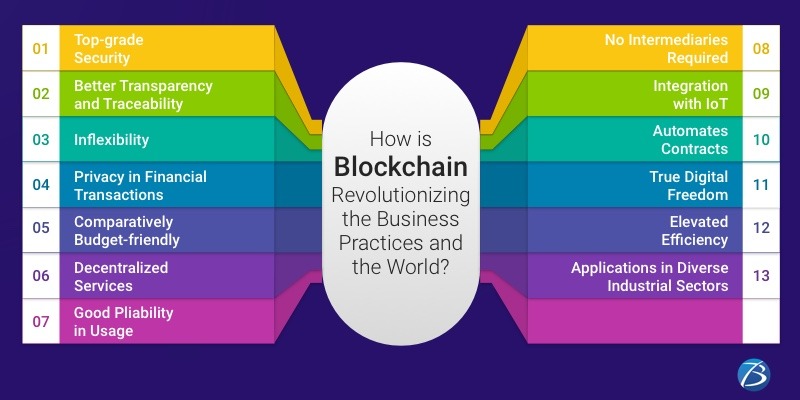
Ground-breaking technologies keep emerging from time to time and Blockchain is one such out-of-the-box innovation. It was exclusively used for buying and selling Bitcoins some time back, but now it is topping the popularity charts for a plethora of other reasons. So what is so special about Blockchain?
Well, Blockchain solutions exceedingly simplify business transactions, they improve transparency and traceability to a great extent while keeping pace with the speed of running businesses and keeping the costs to a bare minimum. Let’s look at some statistics.
- As reported by ReportLinker, the Blockchain market is estimated to grow by 67.3% between the years 2020 to 2025. It is predicted to go from $3 billion to $39.7 billion in these years.
- Another estimation by Statista indicated that global expenditure on Blockchain solutions from the year 2017 to 2024 is expected to cross the value of $6.6 billion.
These staggering numbers speak volumes about the bright scope of Blockchain and ultimately Blockchain App development services. So, now let us dive deeper into the reasons why this technology is the most talked-about technology today.
Rising Significance of Blockchain for Business

Top-grade Security
In this digital era, data is the most vital asset. For ensuring the security of this asset, for preventing it from fraudulent practices, hacking, leakages, etc., Blockchain makes use of high-end mathematical algorithms. Cryptography is used for adding a security layer to all the data that is stored on the network. On the network, every block carries a unique hash so that the data on the blocks cannot be altered or forged; thus ensuring high-level security.
Better Transparency and Traceability
Transparency and traceability are crucial aspects of Blockchain technology wherein every single detail is tracked. The authorized users or businesses have access to all the updates on the transactions in the decentralized network since the very beginning. Public Blockchain is an example of this. It is transparent in nature. It can also be used by corporate enterprises to allow the end-users to either completely or partially interact with the processes.
Inflexibility
Being very rigid, Blockchain opens myriad opportunities for platforms that require immutable traits to make their systems exceedingly functional. For instance, in supply chain management, immutability gives assurance to businesses that no harm will be done to their packages in transit. Also, this immutability trait ensures that the package information won’t be altered in any condition and the system will be alarmed in case any such activity occurs.
Privacy in Financial Transactions
Many new cryptocurrencies are about to enter the market; Monero, Beam, Litecoin, Cardano, Stellar, Tether, etc. to name a few. These are focused on financial privacy i.e. on keeping the information about their economic ownership highly confidential. No one will be able to gather any information about any individual’s financial holdings.
Diverse Applications and Use-cases
Blockchain has vast and diverse applications and it isn’t confined to any particular sector. Its applications can be found in sectors like:
- Digital Currency
- Global Payments
- P2P Lending
- Digital Rights
- Microfinance
- Remittance
- E-commerce
- Voting
- Ownership
- Intellectual Property
- Escrow
- Smart Contracts
- Healthcare
- Record Keeping
- Wagers
- Debt handling
- Crowdfunding, etc.
Comparatively Budget-friendly
When compared with traditional economic models, Blockchain app development services are inexpensive. Since there is no centralization, there isn’t any need to pay the middlemen. Besides, as there is no centralized authority, the buffer needed to optimally run the network is also removed. Furthermore, it requires very little paperwork, the need for hiring people to manage the paperwork, etc. also gets reduced considerably.
Also, the adoption of this technology will help in the reduction of Support Function cost, IT cost, Personnel cost, Operations cost, data breach-related cost, etc.
Decentralized Services
Decentralized services are required in almost every sector, be it energy management, asset management, or anything else. These services enable people to have unprecedented access to options that aren’t currently available in the market. Blockchain is contributing a big-time in this case.
For example, in the music industry, both- music creators and consumers can participate using truly decentralized services, without any human intervention or need for approval from any centralized authority.
Good Pliability in Usage
Blockchain is a secure technology and is used in various applications, making it flexible for usage to suit varying business needs. Cryptography utilized in the Blockchain is highly beneficial for flexibly executing business transactions.
No Intermediaries Required
In Blockchain applications, mediators or intermediaries aren’t required for any kind of transactions related to digital payments, asset management, insurance claims, stock exchange, land registry, etc.
Integration with IoT
Integrating Blockchain with IoT will help make industrial operations much faster, easier, and secure than expected. Using the Blockchain innovation with IoT, data privacy can be easily managed along with high volumes of data, and ownership protection is possible.
Automates Contracts
Contracts where some conditions or situations are specified for automatically executing a pre-defined task, are called smart contracts. These aim to speed up the execution, reduce costs, and ensure overall security. Blockchain helps in the innovation of these smart contracts as it allows automating predefined action execution.
Blockchain-powered smart contracts are highly applicable in supply chain management, maintaining healthcare data, voting systems, royalty distribution agreements, identity access, understanding of intellectual property rights, etc.
True Digital Freedom
There are several centralized entities that may be offering you connectivity for economic transactions, but they do not provide complete freedom. For instance, your bank has the authority to block your transactions or even seize your account even if you haven’t done anything wrong. On the other hand, Blockchain gives you digital freedom. Since there is no central authority here, you are the exclusive owner of your assets.
Elevated Efficiency
Last but most important, since it provides high-end security, refrains from the involvement of the third parties, saves the cost of any intermediaries, etc. Blockchain is proving highly efficient. The banking sector is especially leveraging this technology at a fast pace.
Blockchain Business Applications in Diverse Industrial Sectors
Transportation and Logistics:
- Blockchain-enabled platforms help in the easy management of documents and thus reducing unnecessary paperwork to some extent.
- Modern customers need same-day and one-hour delivery services. In this case, Blockchain services act as a scalable and instant solution for authentication and tracking of orders.
- With the application of smart contracts, faster and error-free approvals and clearances can be ensured at customs checkpoints. This will drastically reduce processing times for goods.
Banking and Finance:
- Blockchain helps financial organizations to ensure authenticity in their systems and maintain proper data integrity.
- It helps streamline processes and improves overall efficiency in processes like real-time settlement, audit, reporting, etc.
- Blockchain solutions also help in investment management, administration, fund launching, etc.
Education:
- Blockchain systems will improve record-keeping.
- It will help in improving efficiency in the business processes like reducing overhead related to background verification, reducing frauds related to CVs, etc.
- Blockchain will help educational organizations to create effective business models.
Healthcare:
- Blockchain solutions help in drug traceability.
- They help in the incentivization of micropayments.
- These also help in the security of electronic health records and clinical trials data
Supply Chain:
- With improved transparency, Blockchain helps in accurate asset tracking.
- Real-time tracing is another benefit that allows secure transactions and saves the goods from any malicious activities.
- It improves tradability.
Concluding Thoughts:
Like other disruptive technologies like AI, ML, RPA, etc., Blockchain, too, has made its mark and it is going to enhance our lives in phenomenal ways. Industrial sectors like Banking and Finance, Healthcare, Transport, Supply Chain, Trading, etc. are already leveraging the benefits of this technology. This blog was just a glimpse of how Blockchain business applications are transforming the world. There is a lot to come.
I hope this article provided you some valuable insights into how Blockchain technology is helping in various sectors.
To know more about our other core technologies, refer to links below:
React Native App Development Company













